#Bantam Dell
Explore tagged Tumblr posts
Text






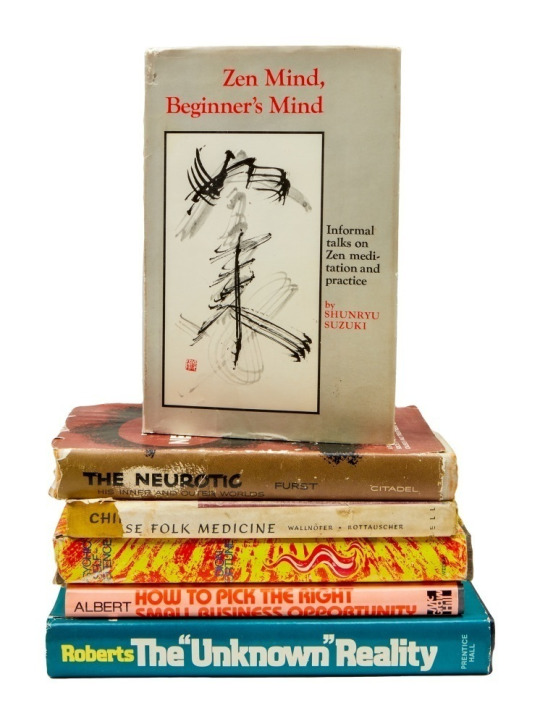
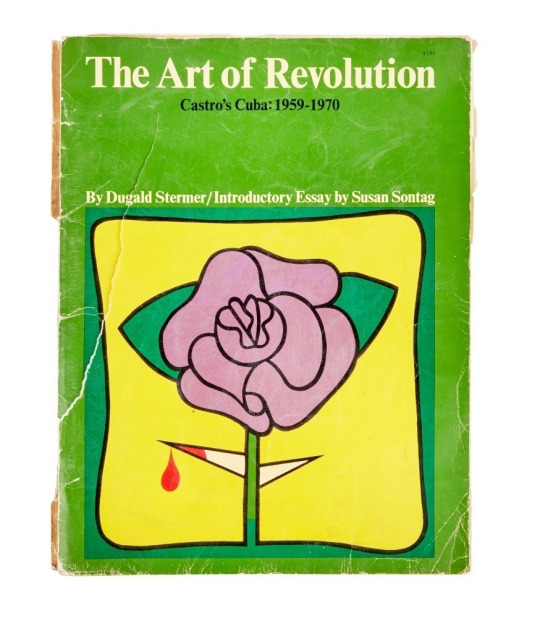
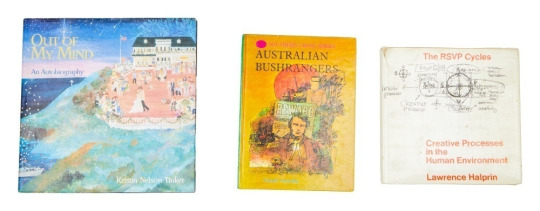
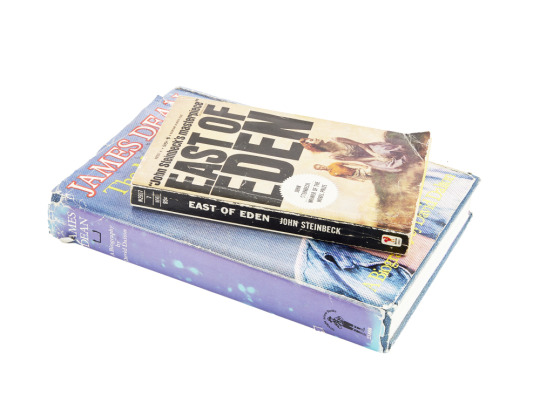
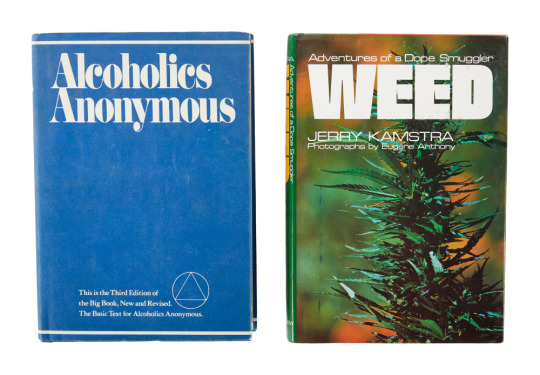




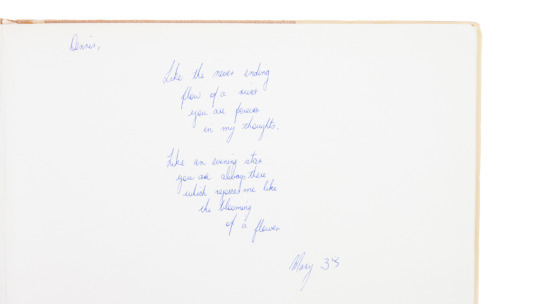
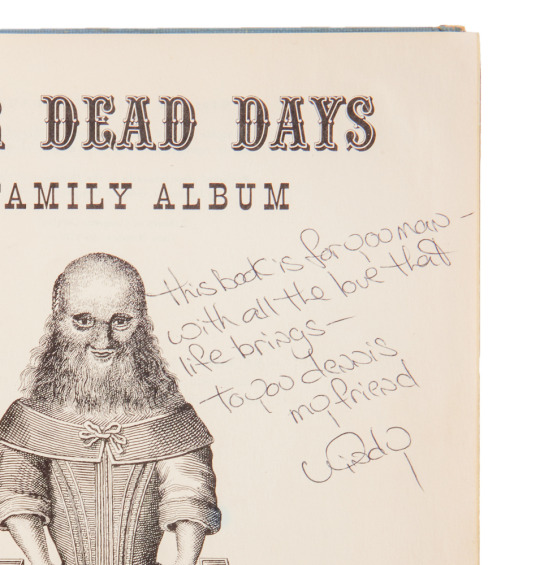
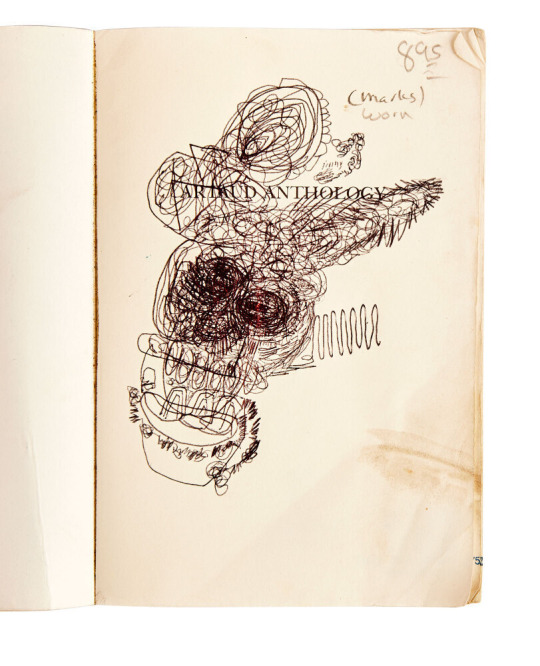

Dennis Hopper's collection of owned and gifted books (a few are listed under the cut)
Islands in the Stream (Charles Scribner's Sons, 1970)
Magic (Delacorte Press, 1976)
Sneaky People (Simon and Schuster, 1975)
Strange Peaches (Harper's Magazine Press, 1972)
I Didn't Know I Would Live So Long (Charles Scribner's Sons, 1973)
Baby Breakdown (The Bobbs-Merrill Company, Inc., 1970)
37 (Holt, Rinehart and Winston, 1970)
Presences: A Text for Marisol (Charles Scribner's Sons, 1970)
Little Prayers for Little Lips, The Book of Tao, The Bhagavadgita or The Song Divine, and Gems and Their Occult Power.
Lolita (G.P. Putnam's Sons, 1955)
The Dramas of Kansas (John F. Higgins, 1915)
Joy of Cooking (The Bobbs-Merrill Company, 1974)
The Neurotic: His Inner and Outer Worlds (First edition, Citadel Press, 1954)
Out of My Mind: An Autobiography (Harry N. Abrams, Inc., 1997)
The Savage Mind (University of Chicago Press, 1966)
Alive: The Story of the Andes Survivors (J.B. Lippincott Company, 1974)
The Documents of 20th Century Art: Dialogues with Marcel Duchamp (Viking Press, 1971)
The Portable Dorothy Parker, A Portrait of the Artist as a Young Man, I Ching, and How to Make Love to a Man.
John Steinbeck's East of Eden (Bantam, 1962)
James Dean: The Mutant King (Straight Arrow Books, 1974) by David Dalton
The Moviegoer (The Noonday Press, 1971)
Erections, Ejaculations, Exhibitions and General Tales of Ordinary Madness (City Light Books, 1974)
Narcotics Nature's Dangerous Gifts (A Delta Book, 1973)
The Egyptian Book of the Dead (Dover Publications, 1967)
Tibetan Yoga and Secret Doctrines (Oxford University Press, 1969)
Junky (Penguin Books, 1977) by William S. Burroughs
Weed: Adventures of a Dope Smuggler (Harper & Row, 1974)
Alcoholics Anonymous (Alcoholics Anonymous World Services, 1976)
Skrebneski Portraits - A Matter of Record, Sketchbooks of Paolo Soleri, and High Tide.
Raw Notes (The Press of the Nova Scotia College of Art and Design, 2005)
Le Corbusier (Heidi Weber, 1965)
Henry Moore in America (Praeger Publishers, 1973)
Claes Oldenburg (MIT Press, 2012)
Notebooks 1959 1971 (MIT Press, 1972)
A Day in the Country (Los Angeles County Museum of Art, 1985)
Album Celine (Gallimard, 1977)
A Selection of Fifity Works From the Collection of Robert C. Scull (Sotheby Parke Bernet, Inc. 1973)
Collage A Complete Guide for Artists (Watsun-Guptill Publications, 1970)
The Fifties Aspects of Painting in New York (Smithsonian Institution Press, 1980)
A Bottle of Notes and Some Voyages (Rizzoli International Publications, 1988)
All Color Book of Art Nouveau (Octopus Books, 1974)
A Colorslide Tour of The Louvre Paris (Panorama, 1960)
Dear Dead Days (G. P. Putnam's Sons, 1959)
Woman (Aidan Ellis Publishing Limited, 1972)
The Arts and Man ( UNESCO, 1969)
Murals From the Han to the Tang (Foreign Languages Press, 1974)
A (Grove Press Inc., 1968)
Andy Warhol's Index Book (Random House, 1967)
Voices (A Big Table Book, 1969)
Another Country (A Dell Book, circa 1960s)
On The Road (Signet, circa 1980s)
97 notes
·
View notes
Text
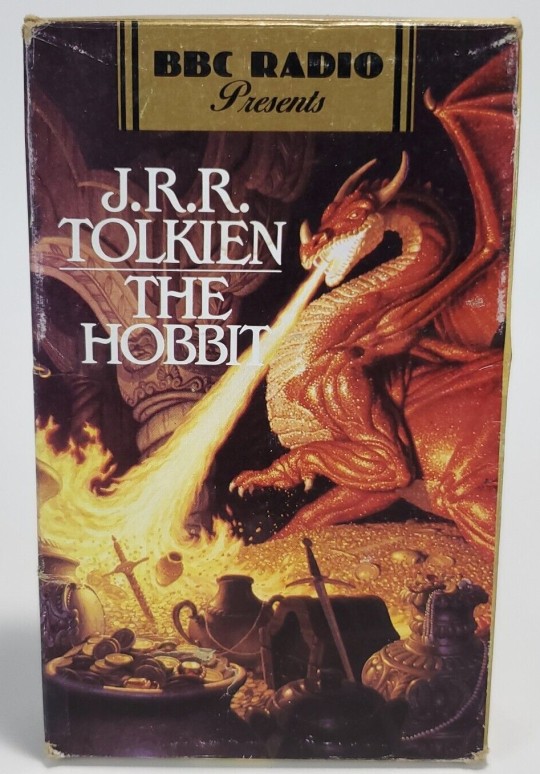
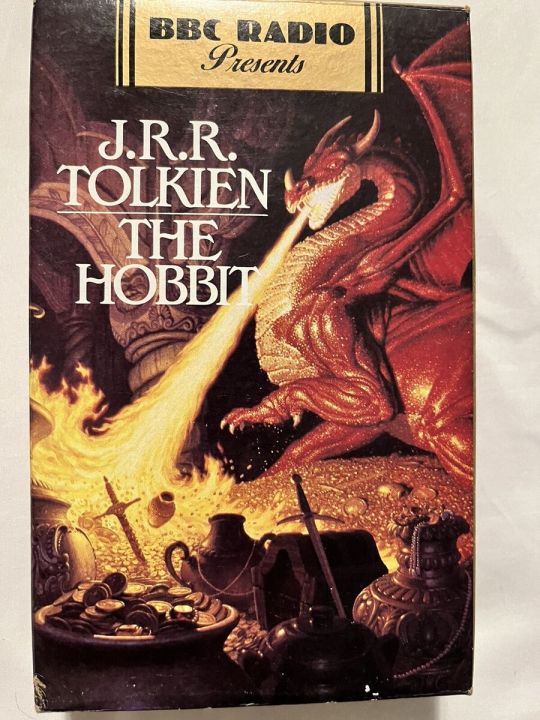
"THEY SHALL SEE ME AND REMEMBER WHO IS THE REAL KING UNDER THE MOUNTAIN!"
PIC(S) INFO: Spotlight on cover/box art to the BBC Radio presentation of J.R.R. Tolkien's "The Hobbit" audiobook, consisting of four [abridged] cassette tapes, and published by Bantam Doubleday Dell Audio in 1988. Artist unknown.
"My armour is like tenfold shields, my teeth are swords, my claws spears, the shock of my tail a thunderbolt, my wings a hurricane, and my breath death!"
-- SMAUG, "Chapter XII: Inside Information," from "The Hobbit" (1937), written by J.R.R. Tolkien
Resolution at 947x1357 & 900x1200.
Sources: eBay (2x), both found as eBay listings (too bad I don't play cassettes, though).
#J.R.R. Tolkien The Hobbit#The Hobbit#The Hobbit J.R.R. Tolkien#Cover Art#BBC Radio Presents The Hobbit#Smaug#Middle-earth#The Hobbit 1937#1988#Urulóki#Fantasy Art#J.R.R. Tolkien#BBC Radio#Audiobook#Dragon fire#Fire-drake#Dragon#BBC Radio Presents#Tolkien#The Hobbit Audiobook 1988#Box Art#Illustration#Painting#BBC
14 notes
·
View notes
Text
What Time the Sexton’s Spade Doth Rust by Alan Bradley
What Time the Sexton’s Spade Doth Rust by Alan Bradley. Bantam Dell/Ballantine/ Random House, 2024. 9780593724514 Rating: 1-5 (5 is an excellent or a Starred review) 5 Format: Paperback ARC (9/3/2024) Genre: Mystery What did you like about the book? The last Flavia de Luce novel came out in 2019 so it is a very welcome surprise to have a new one! Flavia is older, her younger cousin Undine (with…

View On WordPress
0 notes
Text

༅༅༅༅༅༅༅༅
In other words, it preserves the atmosphere of a diversionary ploy as a place to be, not just a place to work, so that the mind tends to be halfway between neutral and in gear.
༅༅༅༅༅༅༅༅
The Light Edit Series. EC Bliss retrofits it for the early 1980’s with a dozen or so easy steps. 100% made from Step 7: Establish an Action Environment from Doing It Now by Edwin C. Bliss, first published in 1983 by Charles Scribner’s Sons and serialized in Glamour Magazine that same year; found in a 1988 paperback edition with cover design by Malcolm Hancock published by Bantam Books, a division of Bantam Doubleday Dell Publishing Group, Inc. The above photo by Jivananda Candrāmā (James FitzGerald) was archived by name and posted prior. -Jivananda (Jim)
0 notes
Video
youtube
Perchè leggere Viaggio Allucinante, di Isaac Asimov
La serie di libri Viaggio Allucinante (Fantastic Voyage) di isaac Asimov, composta da due romanzi non collegati tra di loro, è un'opera veramente atipica per lo scrittore di fantascienza, che credo meriti di essere approfondita.
I libri che la compongono sono:
Viaggio allucinante
Link: https://amzn.to/49h0GIG
Trama: Ridotti alle dimensioni di batteri insieme alla loro navicella, un pugno di uomini e un'intrigante ragazza compiono un viaggio di scoperta. Lo scenario delle loro affascinanti e pericolose esplorazioni però non è il cosmo, ma il corpo umano. La loro incredibile missione, infatti, è quella di viaggiare all'interno del sistema circolatorio di uno scienziato per raggiungere e distruggere l'embolo cerebrale che sta per ucciderlo. Alle insidie che incontrano si aggiungono discordie e tradimenti. Ma il viaggio deve continuare, la sfida all'impossibile deve essere vinta. Perché in gioco c'è la vita di un genio i cui studi hanno portato a risultati straordinari, per quanto ancora sconosciuti.
Viaggio allucinante è un romanzo di fantascienza del 1966 che fu commissionato ad Isaac Asimov dalla Bantam Books, e l'autore dovette scriverlo partendo da un soggetto già ben definito: una sceneggiatura per un omonimo film già scritta da Harry Kleiner, adattata da David Duncan, e che era a sua volta basata sulla storia omonima di Otto Klement e Jerome Bixby.
Dato che non aveva potuto creare lui stesso la trama del libro e aveva potuto modificare solamente alcune enormi incongruità scientifiche, Asimov non fu mai pienamente soddisfatto del romanzo. Questo lo spinse, nel 1987, a scrivere un altro libro sullo stesso tema scientifico del rimpicciolimento che decise di intitolare Destinazione cervello (Fantastic Voyage II: Destination Brain).
La trama ha molti punti in comune con Viaggio allucinante, ma i protagonisti sono del tutti diversi e anche molte altre cose, tra cui la meta del viaggio all'interno del corpo umano, che stavolta non è un embolo, ma i neuroni del cervello e l'ambientazione che stavolta è l'Unione Sovietica.
2. Destinazione cervello
Link: https://amzn.to/3OIF5R7
Trama: La Guerra Fredda è finita, ma il regime sovietico rimane forte e orgoglioso. Americani e sovietici godono della pace, ma sono sempre in lotta per la superiorità tecnologica e il prestigio che l’accompagna. In condizioni di assoluta segretezza, i sovietici hanno sviluppato una tecnologia di miniaturizzazione in grado di ridurre un essere umano alle dimensioni di una molecola, o anche a dimensioni inferiori. Tuttavia, il processo richiede un enorme apporto di energia per miniaturizzare anche un piccolo oggetto per un breve periodo. Quindi, sebbene la miniaturizzazione si sia dimostrata scientificamente possibile, sembra anche essere economicamente impraticabile: un vuoto trionfo. Uno scienziato sovietico, Pyotor Leonovich Shapirov, pioniere del processo di miniaturizzazione, aveva parlato vagamente di aver trovato un modo per renderlo accessibile, ma sfortunatamente ora giace in coma, con i suoi segreti apparentemente nascosti per sempre. I sovietici però vengono a conoscenza di alcune teorie dello scienziato americano Jonas Morrison, che crede che il pensiero creativo venga immagazzinato nei neuroni del cervello e che con la giusta tecnologia sarebbe possibile leggerlo. Lo contattano per aiutarli a estrarre da Shapirov le sue scoperte, e alla fine, spinto dal suo governo Morrison accetta di andare in Russia e una volta lì, sotto ricatto accetta pure di venire miniaturizzato per recarsi con una squadra specializzata all'interno del cervello di Shapirov per utilizzare il suo programma per computer per recuperare i pensieri in esso contenuti. La missione fallisce a a causa della morte di Shapirov, ma Morrison scopre che il suo il computer programmato, invece di leggere i pensieri di Shapirov, ha effettivamente letto i pensieri dei compagni di bordo di Morrison. Ciò induce Morrison a teorizzare che se un certo numero di persone si unissero telepaticamente usando la sua macchina, quelle persone potrebbero formare un cervello superumano che potrebbe riscoprire le teorie di Shapirov in breve tempo.
Asimov, in tutto il romanzo, cerca di dare un aspetto credibile e logico alla miniaturizzazione, spiegando fenomeni come il comportamento della luce esterna che entra nel sommergibile miniaturizzato, o come la materia non miniaturizzata si comporta a contatto di quella miniaturizzata. Spiega anche, in modo semplice ma chiaro, molte delle caratteristiche del cervello e dei fenomeni chimici ad esso connessi.
1 note
·
View note
Link
Check out this listing I just added to my Poshmark closet: Karen Marie Moning Dark Fever & Bloodfever MacKayla Lane PB Novel Set.
0 notes
Text
⸻ Un 𝐛𝐚𝐧𝐭𝐚𝐦 è una varietà di pollame; la maggior parte delle grandi razze di polli e diverse razze di anatre hanno una controparte bantam, che è molto più piccola del pollame di dimensioni standard, ma per il resto simile sotto la maggior parte o tutti gli aspetti.


0 notes
Text
Hannibal Rising Thomas Harris Dell Paperback 2007
Hannibal Rising by Thomas Harris. Dell Bantam Paperback first printing, 2007. Shipping calculated at checkout.

View On WordPress
0 notes
Text
0 notes
Text
October 2021 Deal Announcements
October 2021 Deal Announcements
Adult Fiction Psychotherapist K. L. Cerra’s‘s SUCH PRETTY FLOWERS, a Southern gothic suspense with horror and queer elements about a woman’s investigation into her brother’s unlikely suicide—his last words being “get it out of me”—and subsequently, her obsession with his fiancee, a magnetic, black-eyed florist with a penchant for carnivorous plants; and a second book about a coven operating under…
View On WordPress
#Aiden Thomas#Alexandra Gehringer#Aliza Layne#Amelia Appel#Andrea Colvin#Andy Passchier#Angela Kim#Aria Balrai#Bantam Dell#Ben Kahn#Berkley#Beth Phelan#Camryn Garrett#Caster Semenya#Celia Bell#Chelsea Eberly#Chelsey Emmelhainz#Cherrie Moraga#Cindy Hwang#Cinnabar Moth#Copps Literary Services#Dana Chidiac#Denise Johnstone-Burt#Dutton#Elle Campbell Saves Their Day#Emily Settle#Erin Siu#Feiwel and Friends#Foxes Fire & Other Magic#Freja Nicole Woolf
14 notes
·
View notes
Photo

Nicholas Evans, who has died aged 72 after a heart attack, was the unlikely author of the bestselling novel The Horse Whisperer (1995), which became a Robert Redford film. Unlikely because the book, set in Montana, was a first novel by a British television producer, and landmark because the book sold for a record price at auction, and justified its sale price.
Evans had previously left a successful position as number two to Melvyn Bragg on the South Bank Show, where he produced many of the flagship programmes of the television arts series, including profiles of Patricia Highsmith, John Le Carré, Laurence Olivier, Francis Bacon and, most crucially, the film director David Lean, who became a friend and wondered why Evans was making a film about him, and not something he wanted to do for himself.
Evans then co-produced and wrote a TV film, Murder By the Book (1987), about Agatha Christie and her character Hercule Poirot, played by Peggy Ashcroft and Ian Holm. He wrote three screenplay adaptations, but by 1993 a film project had fallen through and he found himself £65,000 in debt and diagnosed with a stomach melanoma.
Evans had begun writing a novel based on a story that he had been told by a Devon blacksmith, who used the term “horse whisperer” to describe someone with a gift for communicating with horses. Evans had gone to the US, to meet men who did this, thinking the story needed a western setting. “If you set a book in postwar or contemporary Britain, something shrinks,” he said. “It becomes parochial.”
He gave the manuscript of the book, half-finished with an outline of the remainder, to his friend the agent Caradoc King, who took it to the 1994 Frankfurt book fair, where it instigated a bidding war.
Dell bought the US rights for $3.15m, Bantam got UK rights for $537,000 and translation deals in Germany and Italy netted another million dollars. The film rights went to Robert Redford for another $3m because Evans saw Redford in the role of his hero, Tom Booker.
While this was happening, his melanoma was removed by surgery and his local bank manager, who had been demanding repayment of his overdraft, called and invited him to lunch.
The novel got mixed reviews, especially in the US. Virtually no critic could resist mentioning Evans’ advances; many also drew comparison with Robert James Waller’s The Bridges of Madison County. Evans himself acknowledged the influences of Cormac McCarthy, Ernest Hemingway and Jack London. The New York Times critic Michiko Kakutani called it “a sappy romance novel, gussied up with some sentimental claptrap about the emotional life of animals and lots of Walleresque hooey about men and women”.
But it shot to the top of the New York Times’ bestseller list, ranked No15 for the year despite being released in the autumn, and remains one of the bestselling novels of all time. Redford’s 1998 film, which starred the 14-year-old Scarlett Johansson as Grace, the teenager injured along with her prize horse, and Kristin Scott Thomas as her mother, who seeks out Redford’s Booker, and has an affair with him, did well but was not a huge hit.
Evans was born in Bromsgrove, Worcestershire, the son of Anthony, the sales director of a motor engineering company, and Eileen (nee Whitehouse). He was head boy at Bromsgrove school, and after a year teaching in Senegal for Voluntary Service Overseas, went to St Edmund Hall, Oxford to study law, where he met Jenny Lyon, his future wife, in their first week.
After taking a first-class degree, he started work as a journalist for the Evening Chronicle in Newcastle. In 1975, he started at London Weekend Television, first on Weekend World and then the London Programme, the broadcaster’s top current affairs show, before joining the South Bank Show as executive producer from 1982 to 1984.
After Murder By the Book, he adapted screenplays for the TV movies Acts of Betrayal (1988), about the IRA, and Secret Weapon (1990), the story of Mordechai Vanunu, the nuclear bomb whistleblower kidnapped by the Israelis and imprisoned for treason, and for the Julie Walters film Just Like a Woman (1992), based on Monica Jay’s novel about a transvestite’s romance with his landlady.
His second novel, The Loop (1998), brought a wolf biologist, Helen Ross, from Cape Cod into Yellowstone Park to cope with the reintroduction of wolves; pursued by a local lothario, she instead romances his 18-year-old son and cures his stutter. It sold 5m copies.
He followed this up with The Smoke Jumper (2001), whose titular protagonist is in love with his best friend’s wife, and who exiles himself as a war photographer. Next came The Divide (2005), about a wealthy New York couple who holiday in Montana, where the body of their eco-terrorist daughter is discovered frozen in the mountain ice.
Evans and Jenny divorced in 1998. He then married the singer-songwriter Charlotte Gordon Cumming. In 2008, while on a visit to Gordon Cumming’s brother’s estate in Scotland, Evans picked mushrooms for a family lunch. What he thought were ceps were instead highly poisonous webcaps. Evans, Gordon Cumming and her brother were all placed on kidney dialysis. Three years later, Evans’s heart began to suffer under the strain of dialysis, and his daughter Lauren provided him with a kidney; Gordon Cumming later received one donated from a friend.
At the time of the poisoning, Evans had almost finished his fifth novel, The Brave (2009), about a family’s hidden secrets.
When he began writing again, thinking for the second time he needed to finish writing before he died, he said the book changed direction. “I found new empathy with the characters ... it became more emotional,” he said. Gordon Cumming released an album of songs tied to the novel, and they campaigned together for kidney care and organ transplants.
The couple lived in a 14th-century manor house in Devon once owned by the film director Robert Bolt.
Evans is survived by Charlotte, their children, Finlay and Lauren, a son, Max, from his first marriage, and by Harry, his son from a relationship with the television producer Jane Hewland.
🔔 Nicholas Benbow Evans, writer and television producer, born 26 July 1950; died 9 August 2022
Daily inspiration. Discover more photos at http://justforbooks.tumblr.com
9 notes
·
View notes
Text
Here’s some recommended books and movies from the last two pages of Interplay’s old Fallout TTRPG core book;
Books
Alas, Babylon by Pat Frank. Available from Harper Perennial, 1999.
Apocalypse Movies: End of the World Cinema by Kim Newman. Available from Griffin Trade Paperbacks, 1998.
Bangs and Whimpers: Stories About the End of the World, edited by James Frenkel. Available from Lowell House, 1999.
Cat’s Cradle by Kurt Vonnegut. Available from Bantam-Doubleday Dell, 1963.
Danse Macabre by Stephen King. Available from Viking, 1981.
Earth by David Brin. Available from Bantam Books, 1990.
Earth Abides by George R. Stewart. Available from Fawcett Books, 1989.
The Effects of Nuclear Weapons: 3rd Edition (1977), edited by Samuel Glasstone and Philip J. Dolan. Available from United States Department of Defense, 1977.
Lucifer’s Hammer by Larry Niven and Jerru Pournelle. Available from Fawcett Paperbacks, 1977.
The New Madrid Run by Michael Resig. Available from Clear Creek Press, 1998.
On the Beach by Nevil Shute. Available from Ballantine Mass Market Paperback, 1989.
The Postman by David Brin. Available from Bantam Books, 1997.
The Stand: Complete and Uncut by Stephen King. Available from the New American Library, 1991.
153 The Third World War: August 1985 by General Sir John Hackett, et al. Available from McMillan, 1979.
Movies
Atomic Journeys: Welcome to Ground Zero, 1999 documentary, directed by Peter Kuran.
The Atomic Café, 1983 documentary, directed by Jayne Loader and Kevin Rafferty.
A Boy and His Dog, 1975 post-nuclear action, directed by L.Q. Jones. Based on a novella by Harlan Ellison.
The Day After, 1983 made-for-television movie.
Mad Max, The Road Warrior, and Mad Max Beyond Thunderdome, 1979, 1981, and 1985 post-nuclear action.
Nukes in Space: The Rainbow Bombs, 2000 documentary, directed by Peter Kuran.
On the Beach, 1959 drama. On the Beach, 2000 drama (miniseries).
The Postman, 1997 post-nuclear action/drama/epic, directed by and starring Kevin Costner.
Stephen King’s The Stand, 1994 miniseries.
Threads, 1985 made-for-television movie.
Trinity and Beyond: The Atomic Bomb Movie, 1997 documentary, directed by Peter Kuran.
Waterworld, 1995 post-nuclear wet-n-wild action, directed by Kevin Reynolds.
#fallout#post-apoc#post-apocalypse#classic fallout#interplay#falloutfun#longpost#long post#fallout 1#fallout 2#fallout 3#fallout 4#fo1#fo2#fo3#fo4
392 notes
·
View notes
Photo



If you're a fan of Saturday morning cartoons, teenage detectives, and the Cthulhu Mythos, have we got a summer read for you! Meddling Kids, the new novel from Spanish author Edgar Cantero, is a horror-comic treat in which the gang reunites after thirteen years to revisit the events of their final case, now out from Blumhouse Books and Doubleday. Also available in paperback, Cantero's first brilliant scary novel, The Supernatural Enhancements.
#Meddling Kids#Edgar Cantero#Blumhouse Books#bantam doubleday dell#Penguin Random House#Spanish Fiction
8 notes
·
View notes
Text
Brodavis
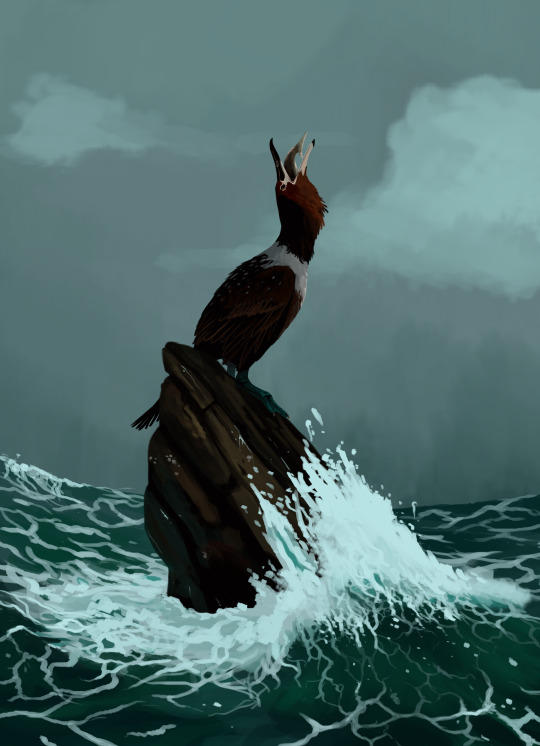
B. americanus by Jack Wood
Etymology: Brodkorb’s Bird
First Described By: Martin et al., 2012
Classification: Dinosauromorpha, Dinosauriformes, Dracohors, Dinosauria, Saurischia, Eusaurischia, Theropoda, Neotheropoda, Averostra, Tetanurae, Orionides, Avetheropoda, Coelurosauria, Tyrannoraptora, Maniraptoromorpha, Maniraptoriformes, Maniraptora, Pennaraptora, Paraves, Eumaniraptora, Averaptora, Avialae, Euavialae, Avebrevicauda, Pygostaylia, Ornithothoraces, Euornithes, Ornithuromorpha, Ornithurae, Hesperornithes
Referred Species: B. americanus, B. baileyi, B. mongoliensis, B. varneri
Status: Extinct
Time and Place: Between 80 and 66 million years ago, from the Campanian to the Maastrichtian ages of the Late Cretaceous

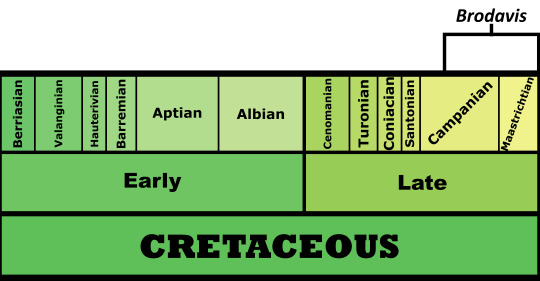
Brodavis is known from a variety of habitats, most within the Western Interior Seaway of North America, with one in Asia: the Frenchman Formation, the Hell Creek Formation, the Pierre Shale Formation, and the Nemegt Formation.
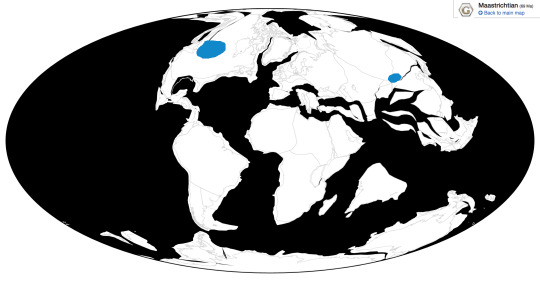
Physical Description: Brodavis was a large bird, but a small dinosaur, reaching up to 90 centimeters in body length (though some species were half that size). It had a cylindrical body and long legs, good for propelling it through the water. It had a lightly built skeleton, though, so it wasn’t well adapted to diving - and may have even still been able to fly, though not particularly well. It had a long, skinny neck, and a small head ending in a long and pointed beak. This beak was full will small, pointy teeth for catching fish. It is unclear whether or not it had webbing between its toes, but this is definitely possible. The colors of Brodavis are poorly known, but it was certainly covered with feathers all over its body.
Diet: Brodavis would have primarily eaten fish and other aquatic life.
Behavior: Being a water-based creature, Brodavis spent most of its time near the water, swimming through along the surface and looking for food. Based on other Hesperornithines, it swam mostly with its feet, propelling them like living animals such as grebes today. Its wings, which were still probably functional, would have not been used in the water. Still, given the presence of flight in Brodavis, it probably would have been able to take off from the water to avoid danger - and back to the water to avoid more danger still, given the large predatory dinosaurs it shared habitats with. It would have then gone to the coasts to rest and rejoin other Brodavis, and would have also had nests there that they had to take care of. How social it was, or other specifics on behavior, are unknown at this time - though it would not be surprising if they lived in large family groups, given how common such behavior is in modern aquatic birds and the fact that it’s a fairly common genus of dinosaur.
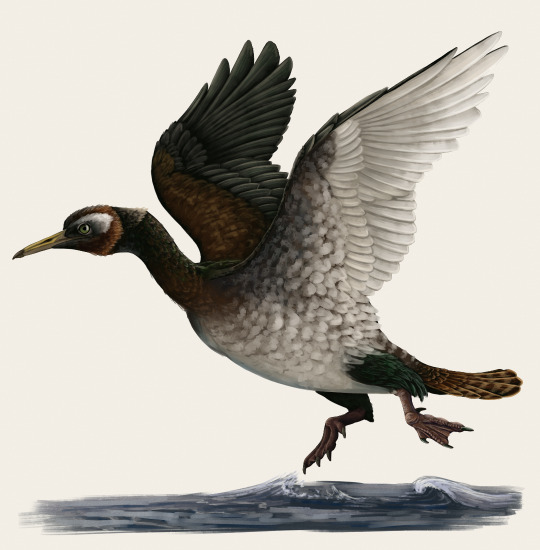
B. varneri By Scott Reid
Ecosystem: Being known from a wide variety of habitats, it’s nearly impossible to completely describe everything Brodavis ever lived with in one dinosaur article. That being said, Brodavis tended to live along the coast of major waterways (especially in freshwater areas), where it would spend most of its time underwater but go back to the shores to rest, mate, and take care of their young. Since Brodavis was found both in the Western Interior Seaway and the Seaway of Eastern Asia, it probably would have encountered a wide variety of other dinosaurs. In the Canadian Frenchman Formation, for example, it would have encountered the small herbivore Thescelosaurus, the large hadrosaur Edmontosaurus, the horned dinosaurs Triceratops and Torosaurus, the ostrich-like Ornithomimus, and the large predator Tyrannosaurus. In Hell Creek the companions of Brodavis were many, but included other dinosaurs like Tyrannosaurus, Ornithomimus, Triceratops, Torosaurus, Edmontosaurus, and Thescelosaurus like the Frenchman Formation - but also ankylosaurs like Denversaurus and Ankylosaurus, pachycephalosaurs like Sphaerotholus and Pachycephalosaurus, the small ceratopsian Leptoceratops, another ostrich-like dinosaur Struthiomimus, the chickenparrot Anzu, the raptor Acheroraptor, the opposite bird Avisaurus, and the modern bird Cimolopteryx - and more! In the Pierre Shale, Brodavis was accompanied by other Hesperornithines like Baptornis and Hesperornis. And, finally, in the Nemegt, Brodavis lived with another Hesperornithine Judinornis, the duck Teviornis, the ankylosaur Tarchia, the hadrosaur Saurolophus, the pachycephalosaurs Prenocephale and Homalocephale, the titanosaur Nemegtosaurus, the tyrannosaurs Alioramus and Tarbosaurus, Duck Satan Himself Deinocheirus, the ostrich-mimics Anserimimus and Gallimimus, the alvarezsaur Mononykus, the therizinosaur Therizinosaurus, the chickenparrots Avimimus, Elmisaurus, Nomingia, and Nemegtomaia; the raptor Adasaurus, and the troodontid Zanabazar. Given this wide variety of habitats and neighbors, Brodavis was probably able to live in freshwater habitats, unlike other hesperornithines, and it was decidedly a very adaptable dinosaur.
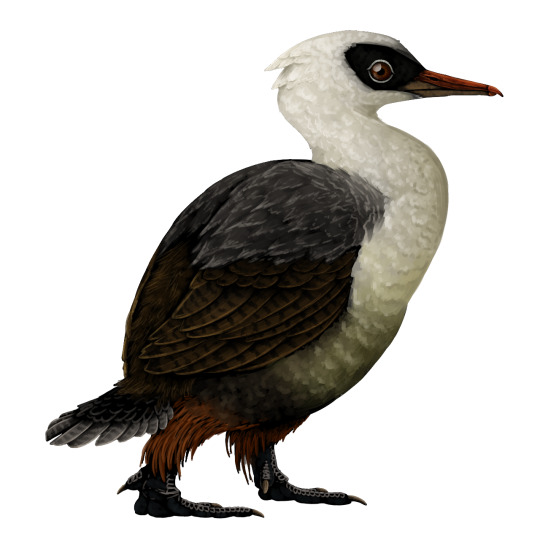
B. baileyi by Scott Reid
Other: Brodavis represents a unique group of Hesperornithines, though it’s possible the genus is overlumped, which would make the family that currently only has Brodavis in it (Brodavidae) actually informative.
Species Differences: These species differ mainly on where they’re from - B. americanus from the Frenchman Formation, B. baileyi from the Hell Creek Formation, B. mongoliensis from the Nemegt, and B. varneri from the Pierre Shale. As such, B. varneri is the oldest of the four, and may be its own genus. It is also the best known species.
~ By Meig Dickson
Sources under the Cut
Aotsuka, K. and Sato, T. (2016). Hesperornithiformes (Aves: Ornithurae) from the Upper Cretaceous Pierre Shale, Southern Manitoba, Canada. Cretaceous Research, (advance online publication).
Bakker, R. T., Sullivan, R. M., Porter, V., Larson, P. and Saulsbury, S. J. (2006). "Dracorex hogwartsia, n. gen., n. sp., a spiked, flat-headed pachycephalosaurid dinosaur from the Upper Cretaceous Hell Creek Formation of South Dakota". in Lucas, S. G. and Sullivan, R. M., eds., Late Cretaceous vertebrates from the Western Interior. New Mexico Museum of Natural History and Science Bulletin 35, pp. 331–345.
Boyd, Clint A.; Brown, Caleb M.; Scheetz, Rodney D.; Clarke; Julia A. (2009). "Taxonomic revision of the basal neornithischian taxa Thescelosaurus and Bugenasaura". Journal of Vertebrate Paleontology. 29 (3): 758–770.
Campione, N.E. and Evans, D.C. (2011). "Cranial Growth and Variation in Edmontosaurs (Dinosauria: Hadrosauridae): Implications for Latest Cretaceous Megaherbivore Diversity in North America." PLoS ONE, 6(9): e25186.
Carpenter, K. (2003). "Vertebrate Biostratigraphy of the Smoky Hill Chalk (Niobrara Formation) and the Sharon Springs Member (Pierre Shale)." High-Resolution Approaches in Stratigraphic Paleontology, 21: 421-437.
Estes, R.; Berberian, P. (1970). "Paleoecology of a late Cretaceous vertebrate community from Montana". Breviora. 343.
Glass, D.J., editor, 1997. Lexicon of Canadian Stratigraphy, vol. 4, Western Canada. Canadian Society of Petroleum Geologists, Calgary, Alberta, 1423.
Gradzinski, R., J. Kazmierczak, J. Lefeld. 1968. Geographical and geological data form the Polish-Mongolian Palaeontological Expeditions. Palaeontologia Polonica 198: 33 - 82.
Henderson, M.D.; Peterson, J.E. (2006). "An azhdarchid pterosaur cervical vertebra from the Hell Creek Formation (Maastrichtian) of southeastern Montana". Journal of Vertebrate Paleontology. 26 (1): 192–195
Jerzykiewicz, T., D. A. Russell. 1991. Late Mesozoic stratigraphy and vertebrates of the Gobi Basin. Cretaceous Research 12 (4): 345 - 377.
Kielan-Jaworowska, Z., R. Barsbold. 1972. Narrative of the Polish-Mongolian Palaeontological Expeditions 1967-1971. Palaeontologia Polonica 27: 5 - 136.
Lerbekmo, J.F., Sweet, A.R. and St. Louis, R.M. 1987. The relationship between the iridium anomaly and palynofloral events at three Cretaceous-Tertiary boundary localities in western Canada. Geological Society of America Bulletin, 99:25-330.
Longrich, N. (2008). "A new, large ornithomimid from the Cretaceous Dinosaur Park Formation of Alberta, Canada: Implications for the study of dissociated dinosaur remains". Palaeontology. 54 (1): 983–996.
Longrich, N.R., Tokaryk, T. and Field, D.J. (2011). "Mass extinction of birds at the Cretaceous–Paleogene (K–Pg) boundary." Proceedings of the National Academy of Sciences, 108(37): 15253-15257.
Novacek, M. 1996. Dinosaurs of the Flaming Cliffs. Bantam Doubleday Dell Publishing Group Inc. New York, New York.
Martin, L. D., E. N. Kurochkin, T. T. Tokaryk. 2012. A new evolutionary lineage of diving birds from the Late Cretaceous of North America and Asia. Palaeoworld 21: 59 - 63.
Martyniuk, M. P. 2012. A Field Guide to Mesozoic Birds and other Winged Dinosaurs. Pan Aves; Vernon, New Jersey.
Pearson, D. A.; Schaefer, T.; Johnson, K. R.; Nichols, D. J.; Hunter, J. P. (2002). "Vertebrate Biostratigraphy of the Hell Creek Formation in Southwestern North Dakota and Northwestern South Dakota". In Hartman, John H.; Johnson, Kirk R.; Nichols, Douglas J. (eds.). The Hell Creek Formation and the Cretaceous-Tertiary boundary in the northern Great Plains: An integrated continental record of the end of the Cretaceous. Geological Society of America. pp. 145–167.
Tokaryk, T. 1986. Ceratopsian dinosaurs from the Frenchman Formation (Upper Cretaceous) of Saskatchewan. Canadian Field-Naturalist 100:192–196.
Varricchio, D. J. 2001. Late Cretaceous oviraptorosaur (Theropoda) dinosaurs from Montana. pp. 42–57 in D. H. Tanke and K. Carpenter (eds.), Mesozoic Vertebrate Life. Indiana University Press, Indianapolis, Indiana.
Watabe, M., S. Suzuki, K. Tsogtbaatar, T. Tsubamoto, M. Saneyoshi. 2010. Report of the HMNS-MPC Joint Paleontological Expedition in 2006. Hayashibara Museum of Natural Sciences Reasearch Bulletin 3:11 - 18.
Weishampel, David B.; Dodson, Peter; and Osmólska, Halszka (eds.): The Dinosauria, 2nd, Berkeley: University of California Press. 861 pages.
#Brodavis#Euornithine#Hesperornithine#Bird#Dinosaur#Theropod Thursday#Piscivore#North America#Eurasia#Cretaceous#Brodavis americanus#factfile#Brodavis baileyi#Brodavis mongoliensis#Brodavis varneri#Birds#Dinosaurs#prehistoric life#paleontology#prehistory#birblr#palaeoblr#biology#a dinosaur a day#a-dinosaur-a-day#dinosaur of the day#dinosaur-of-the-day#science#nature
182 notes
·
View notes
Text
Enneatipo 4 : L’individualista
I Tipi Quattro sono autocoscienti, sensibili, riservati, empatici, creativi, introspettivi, lunatici e egocentrici. Possono provare un senso di vulnerabilità che li fa nascondere al mondo e un disprezzo per i modi di vivere ordinari. Hanno problemi con malinconia, mancanza di indulgenza verso se stessi e autocommiserazione.
Il tipo 4 è detto “l’Individualista” perché sente di non essere come gli altri esseri umani e che quindi nessuno lo possa capire o amare in modo adeguato.
Percepiscono spesso di avere un talento unico e speciale e al contempo di essere particolarmente svantaggiati o pieni di difetti. Sono consapevoli delle proprie personali mancanze, e si concentrano su di esse. I Quattro sani sono onesti con sé stessi, riconoscono i propri sentimenti/motivazioni/contraddizioni/conflitti emotivi senza negarli o mascherarli. Anche se possono non amare ciò che scoprono, non tentano di nasconderlo a sé stessi o agli altri. Non hanno paura di vedere tutte le loro imperfezioni. Sono disposti a rivelare cose molto personali e potenzialmente vergognose di sé, perché vogliono comprendere la verità della propria esperienza, così da poter scoprire chi sono e affrontare la propria storia emotiva. Spesso sentono una mancanza di qualcosa dentro di sé che non sanno definire e che vedono invece abbondare negli altri. Sentono di non avere una chiara e stabile identità, soprattutto una identità sociale in cui sentirsi a proprio agio.
I Tipi Quattro si sentono diversi dagli altri ma non vogliono veramente essere soli. Possono sentirsi socialmente inadeguati o a disagio con sé stessi, ma desiderano profondamente essere in contatto con persone che li comprendono e capiscono le loro emozioni. Sono romantici e desiderano che qualcuno arrivi nella loro vita e apprezzi il loro sé nascosto.
Se questo non accade, si confortano diventando individualisti convinti: devo fare tutto da solo, con i miei modi e le mie condizioni. Il loro mantra diventa: “Io sono me stesso. Nessuno mi capisce. Io sono diverso e speciale”, mentre in realtà desidera segretamente avere il benessere interiore e la sicurezza di cui gli altri sembrano godere. I Quattro hanno di solito un’immagine di sé negativa e una bassa autostima che tentano di compensare coltivando un’immagine idealizzata di sé stessi. Nel corso della loro vita, i Quattro possono provare diverse identità per vedere quanto calzano, basandosi sulle qualità che ritengono attraenti negli altri. Ma sotto la superficie si sentono sempre insicuri circa chi sono realmente. Il problema è che basano la propria identità in gran misura sulle proprie emozioni e quando rivolgono il loro sguardo all’interno di sé vedono un caleidoscopio sempre mutevole di emozioni.
Una delle più grandi sfide che I tipi Quattro devono affrontare è quella di imparare a lasciare andare le emozioni del passato. Tendono a crogiolarsi nel dolore e restano attaccati a sentimenti negativi verso coloro che li hanno feriti.
Tipi 4 famosi: Maria Callas, Johnny Deep, Oriana Fallaci, Michael Jackson, Amy Winehouse, Principe Carlo, Charles Baudelaire, Marlon Brando, Nicolas Cage, Eric Clapton, Kurt Cobain, Angelina Jolie, Michelangelo, Jim Morrison, Edith Piaf.
Tritipo con le ali: 854
primo tipo dominante, basato sul corpo: 8 (8w7)
secondo tipo dominante, basato sul cuore: 5 (5w4)
terzo tipo dominante, basato sulla testa: 4 (4w3)
-Fonte: Don Richard Riso and Russ Hudson, 1999, The Wisdom of the Enneagram, New York, A Bantam Book, 180-18
#enneagram#enneagramma#enneagramma tipo 4#my enneagram#ennegram type#type4#type 4#personality quiz#enneatipo#enneatypes#diario di bordo#dear diary#diario#diariodibordo#pensieri#citazioni#citazione#psicologia#test#test di personalità#personality#personality test#diario 2019#diario2019
7 notes
·
View notes
Text
2 notes
·
View notes